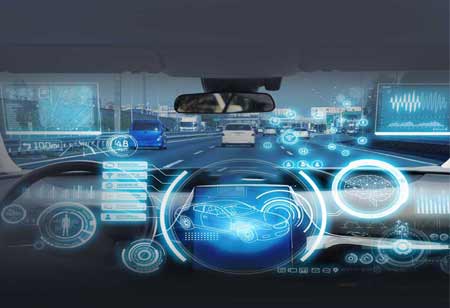THANK YOU FOR SUBSCRIBING
THANK YOU FOR SUBSCRIBING
Be first to read the latest tech news, Industry Leader's Insights, and CIO interviews of medium and large enterprises exclusively from Auto Tech Outlook

By
Auto Tech Outlook | Wednesday, May 10, 2023
Stay ahead of the industry with exclusive feature stories on the top companies, expert insights and the latest news delivered straight to your inbox. Subscribe today.
FREMONT, CA: Autonomous vehicles go through numerous challenges, such as management of traffic, infrastructure, revenue, and insurance coverage for liability though it is adopting strategies to overcome them.
Due to the increase in architectural complexity and computational requirements, solutions will need to balance performance and cost-effectiveness, requiring high-performance, precise sensors as well as accurate models of the vehicle's surroundings. Cameras, radar sensors, and infrared sensors will also enable autonomous driving.
OEMs in developed countries typically employ L3 autonomy, with a human taking control when necessary. It is important to note, however, that the L3 level of autonomy is not entirely safe. When the car requests control, the driver may not have enough time to react to being taken over, making it difficult to hold him or her responsible for an accident. The adoption of self-driving cars could be hampered by five major obstacles.
'Common sense is still being taught to AI: A self-driving car uses deep neural networks for Artificial intelligence (AI). The movement of objects on the road or traffic signals is tracked using a machine learning algorithm, and the control system makes decisions based on the information. When there is a red light, the autonomous car will stop, or if there is a construction diversion sign, the car will move accordingly.
The AI system will slam the brakes if it detects a flock of birds on the road, but when it fails to understand real-world scenarios, such as it will unnecessarily stop if it sees a plastic bag flying in front. AI may not understand that as it moves forward, the birds will fly away.
In the real world, drivers deal with many complex social interactions. Detecting signs such as a cyclist's hand movement or eye contact with a pedestrian who is signaling the car to go ahead may be difficult for robots.
With more data, AI is training the system to increase accuracy, but it needs more common sense to operate appropriately for fully autonomous cars. Due to this, the transition to fully autonomous vehicles will be slow as the AI will need time to develop common sense and apply it to real-life situations, such as those involving pedestrians, cyclists, fellow drivers, and animals.
Complementary infrastructure and technology: Fully autonomous vehicles must read traffic signs in order to determine the speed limit. In developed countries, traffic signs and lane markings may be absent in some areas.
As 5G is deployed, a more connected vehicle-infrastructure combination will ensure that fully autonomous vehicles operate seamlessly. Despite the absence of roadside traffic signs, driverless cars will behave safely if nearby vehicles or traffic signals transmit information.
Additionally, the issue of whether communication will function adequately in all locations needs to be addressed. Connectivity issues must be resolved by OEMs and connectivity providers working together. Self-driving cars will require massive investments in infrastructure and technology.
Connectivity and cybersecurity - the flip side: In this age of connected mobility, data privacy and cybersecurity are major concerns. OEMs must ensure they do not infringe on consumers' privacy while also protecting data from hackers. In order to safeguard the data of the car manufacturer processed inside the vehicle and transmitted via cloud-based communication platforms, robust security protocols should be developed.
Cybersecurity should be strengthened for fully autonomous cars with the rollout of 5G and a highly connected transportation system. Fiat Chrysler recalled 1.4 million vehicles in 2015 to fix bugs because they could be hacked and controlled remotely. It sounds dangerous for the safety of the public on the road. It is imperative that companies protect self-driving cars from technology misuse by carjackers.
 Copyright © 2025 AutoTech Outlook. All Rights Reserved | Privacy Policy | Subscribe | Sitemap | About us | Feedback Policy | Editorial Policy
Copyright © 2025 AutoTech Outlook. All Rights Reserved | Privacy Policy | Subscribe | Sitemap | About us | Feedback Policy | Editorial Policy 



